Sidetracks And Detours present PASS IT ON 31 weekly walkabout Sunday 17th December
Sidetracks And Detours
present
PASS IT ON 31
weekly walkabout Sunday 17th December
Hello, it might be a few days early but here is your (first) Christmas stocking. It contains historical notes by The Mary Rose Trust and Michael Higgins, before you take out your big present from The Bournemouth Symphony Orchestra. There´s a jazz gig review by Trevor Bannister and after the sad loss of Shane MacGowan, we bring you a fairytale of Manchester, Ralph Dent looks at how Remembered (Christmas) Music is being treated, and Peter Pearson follows all points forward, as he follows the three brightest stars in his musical constellations. We then gather Island Insights from Norman Warwick about the Volcanoes of Lanzarote, as discussed in a superb new book. We are sure there are useful guides to all our readers towards some interesting reading of historic and scientific facts and some wonderful music to listen to.

CONTENTS

How it Was Then
Christmas in Tudor England
as told in THE MARY ROSE TRUST newsletter
All Across The Arts
Toad Lance Concerts
review by DR.JOE DAWSON
Live Music
Bournemouth Symphony Orchestra
preview by NEWSLETTER
Live Jazz
Jazz at Progress November 2023
Music Is: Chris Biscoe Plays Mike Westbrook
review by TREVOR BANNISTER
Fairy Tale Of Manchester
Shane MacGowan & Ewan McColl
report by I LOVE MANCHESTER newsletter
Remembered Music
Christmas Song: Chestnuts Roasting On An Open Fire
by RALPH DENT
Reader´s Perspective
All Points Forward: Looking Ahead and Behind
with PETER PEARSON
Island Insights
HOW TO PRESENT A PRESENTATION
The Island Of Volcanoes by Roger Trend
first impressions by NORMAN WARWICK


How it Was Then
Christmas in Tudor England
as told in THE MARY ROSE TRUST newsletter

Christmas is a special time for everyone in Tudor England, consisting of 12 days of convivial merriment, love for your fellow man and most importantly of all, a giant, festive feast!
Amongst decorations of various foliage such as holly, ivy, and mistletoe the rich and poor would feast on a variety of festive food. During this period food was seasonal, and a lot of Tudor recipes followed on from medieval customs of mixing sweet and savoury.
The court of King Henry VIII would have been witness to a show of incredible wealth over the 12 days of Christmas with freshly roasted meats, a bountiful array of spices and plenty of sugar, such as plum puddings – eaten before your main course. Other recipes included Christmas pie, which consisted of a partridge being stuffed into a pigeon, stuffed in a chicken, stuffed in a goose, stuffed in a turkey and encased in pastry case called a coffin. This would be served with more game birds around the side. This may have happened on a smaller scale with the Mary Rose‘s officers.
Twelfth Night cake was an important and symbolic festive food item. With a coin or dried bean hidden in the mixture, for whoever found it.
The ordinary crew would have also had a lavish feast, or as lavish as they could afford. Fasting for the 24 days of advent to save food for the festivities, all the crew would have had a full 12 days off work to celebrate and be merry. Some of the humbler recipes included pease pudding, shred pie (the precursor to the mince pie) and fromante – boiled cracked wheat with milk, dried fruit and spices.
Even though Christmas lasted 12 days, lay folk could afford to feast every day, so many feasted on as much as they could afford. Traditional Christmas spices that we used today were brought especially for these feasts, alongside the abundance of meat – for many this was an exquisite once a year treat.
Festivities were concluded on Twelfth Night, with an abundance of food, alcohol, festive games, the Lord of Misrule and Tudor carolling with songs such as In Dulce Jubilo having roots in this period.
Wassail.

logo aata
Toad Lane Concerts, Rochdale
Slava Sidorenko’s piano students from Chetham’s School of Music at TLC
Review by Dr Joe Dawson
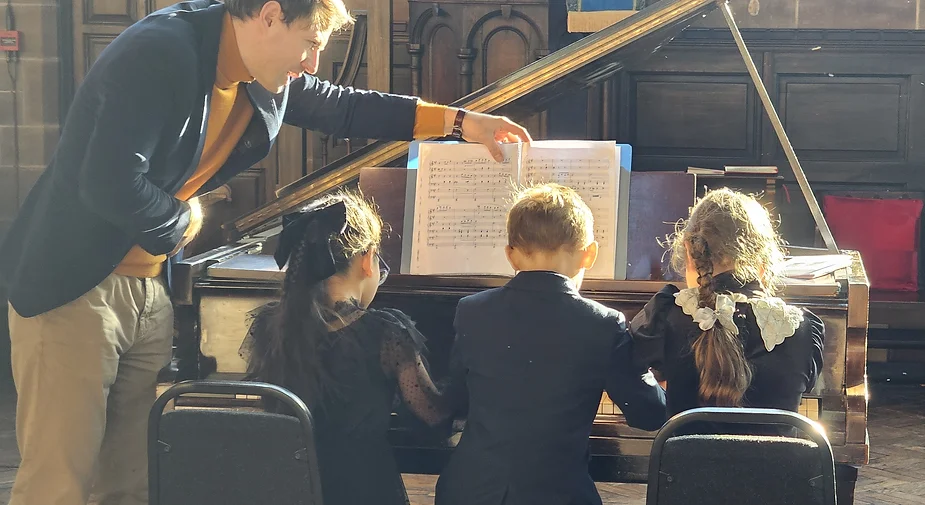
Three talented young pianists from Chetham’s at a single piano (left) for an astonishing performance, not of Chopsticks, as one might reasonably expect, but of Rachmaninoff’s mighty ‘Valse for 6 Hands’. A triumph that set the mood for delightful works from the individuals who then performed wholly from memory: Kullak’s The Evening Bell from Amina (Year 4), JS Bach’s Prelude in Cm from Artem (year 7), and a JS Bach 3-part Invention and two pieces by Chopin from Tamara (year 4).
Chetham’s School of Music is an internationally renowned independent co-educational specialist music school in Manchester. There are 300 students aged 8 to 18, approximately two-thirds of whom are boarders.
photo Slava Sidorenko is ideally placed as a mentor. A first-rate international recitalist and concerto soloist, he began his musical education at the age of five and went to the Special Music School in Kharkov, Ukraine. An Associated Board (ABRSM) scholarship brought him to the RNCM where he won many major awards including its coveted Gold Medal and was appointed an RNCM Ambassador. Excellent to see him sharing his experience and skills.
Older pupils went on to demonstrate progression and maturity, again all from memory. Rachmaninoff’s Prelude in B minor and Chopin’s Valse in C sharp minor were beautifully played by Mariia Savkevych (Year 10). Then a spirited performance of the first movement of Beethoven’s ‘Waldstein’ Sonata from Youming Ge (Year 12). Finally, commanding interpretations of Chopin’s Nocturne in B flat minor and Rachmaninoff’s Prelude in G sharp minor from Charles Day (Year 13).
The audience was overjoyed with the display of musicianship and gained inspiring glimpses of fine music education from this rising generation of gifted pianists.
This was concert number 1,065 since taking over from the council in 2001. The Queen’s Award-winning Toad Lane Concerts are every Wednesday 12:30 – 13:30 at the Grade 1 listed St Mary in the Baum Church, Rochdale OL16 1DZ, admission £6. Contact 01706 648872.

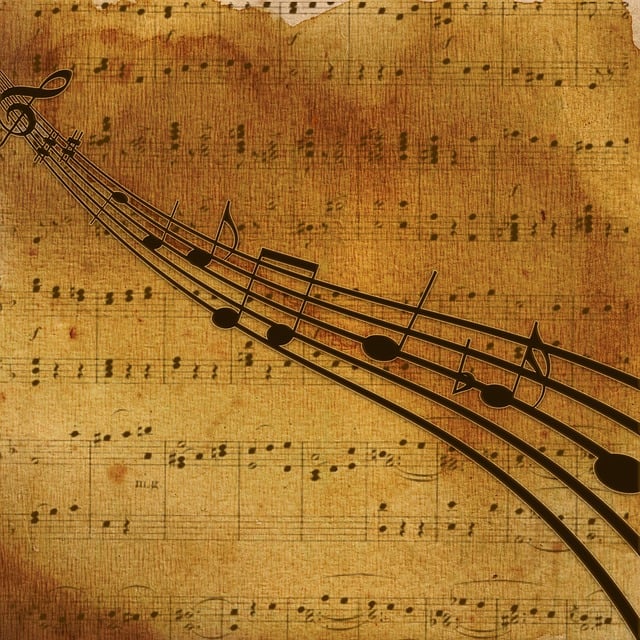
Live Music
BOURNEMOUTH SYMPHONY ORCHESTRA

Music-making and live performance lies at the heart of everything we do at the BSO. We perform regular full symphonic concerts in Poole, Exeter, Bristol, Portsmouth, Southampton, Basingstoke, Yeovil and Truro as well as ensemble and chamber concerts in smaller venues across the South and South West of England.
The majority of Wednesday night Poole concerts are also livestreamed as part of our BSO@Home digital series. As well as the simultaneous live webcast, each concert is also available to watch on demand for 30 days after the performance and can be purchased at any time during this period.
We offer great multibuy discounts – the more you visit us the more you save! Discounts are applicable for all live concerts booked directly through the BSO ticket office and discounts are automatically applied as you reach each qualifying level.
15-22 concerts 20% off 10-14 concerts 15% off
5-9 concerts 10% off 3-4 concerts 5% off
We also have a number of concessions – click on the ‘Information on buying tickets‘ link for more details.
If you have a ticket query please email hello@bsorchestra.co.uk with details and a contact telephone number, and a member of the marketing team will get back to you as soon as possible. You may also like to call us on 01202 669925 but please be aware that you may need to leave a message.
Seasons greetings from Bournemouth Symphony Orchestra! We hope you are enjoying the festivities this winter and are planning on joining us as we celebrate the season.
This year’s end means the beginning of a new one, filled with returning favourites and new ventures. While we’re starting our seasonal concerts this weekend and still have the opening of the new orchestral season at Bristol Beacon to look forward to this month, we are now also on sale for our fantastic weekend of Proms in the Park at Meyrick Park in July 2024.
We’re also excited to share that we will be launching a new Audience Feedback Forum in the New Year – please follow the link to find out more information and how to get involved.
We look forward to seeing you in the concert hall soon at some of the following events.

Kirill Conducts The Rite of Spring Turnage, Shostakovich, Beethoven, Stravinsky
Bristol Beacon, Bristol, Tuesday 19 December,
preview by
BOURNEMOUTH SYMPHONY ORCHESTRA
newsletter
The BSO opens the Bristol Beacon’s 2023/24 orchestral season in celebratory style. A newly commissioned fanfare written especially for the occasion by Mark-Anthony Turnage heralds spectacular orchestral showpieces from Beethoven and Stravinsky. Stravinsky’s inspirational ballet, The Rite of Spring, is infused with an explosive fusion of rhythmic energy and instrumental colour, which evokes the violent genesis of pagan fertility and sacrifice. The Emperor is the largest in scale of all Beethoven’s concertos. It is an epic tour de force of unprecedented breadth and scale, pushing the virtuosic dexterity of the soloist to the full. Although Beethoven never gave the work its now familiar name, a spirit of heroism nonetheless infuses the music. Shostakovich’s effervescent and triumphal Festive Overture shows the lighter side of an otherwise serious and introspective artist – perfect for any celebration.
Works and composers
TurnageBeacons – Fanfares for Orchestra (world premiere)
Shostakovich Festive Overture
Beethoven Piano Concerto No.5 ‘Emperor’
Stravinsky The Rite of Spring
Last Night of the Christmas Proms
Seasonal favourites and festive fun
Wednesday, 20th December, 7.30pm
Exeter University Great Hall, Exeter
Kick off Christmas with a fun-packed concert for all the family, featuring seasonal classics old and new, all wrapped up with a sprinkling of magic and sparkle. A rollercoaster of Christmas favourites including Jingle Bells, White Christmas, Sleigh Ride, Chestnuts Roasting on an Open Fire, It’s the Most Wonderful Time of the Year and classic party hits by Wizzard and Slade. We welcome back James Spilling to lead proceedings and to sing a selection of treats by the masters of the musical – Rodgers & Hammerstein.
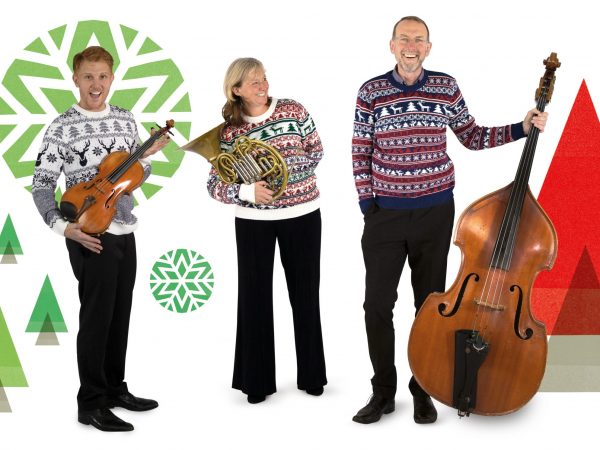
Works and composers
Rodgers & Hammerstein The Carousel Waltz
Rodgers & Hammerstein Oh What Beautiful Morning
Rodgers & Hammerstein Surrey With The Fringe On Top
Anderson Sleigh Ride
Marks Rockin’ Around the Christmas Tree
Prokofiev Troika
Trad. arr. GoodwinThe 12 Days of Christmas
Wells/Tormé Chestnuts Roasting On An Open Fire
Marks Rudolf the Red-Nosed Reindeer
Berlin White Christmas
Slade Merry Christmas Everybody
Wood Oh I Wish It Could Be Christmas Everyday
Last Night of the Christmas Proms
Seasonal favourites and festive Fun
Thursday 21 December, 7.30pm
Portsmouth Guildhall, Portsmouth
Kick off Christmas with a fun-packed concert for all the family, featuring seasonal classics old and new, all wrapped up with a sprinkling of magic and sparkle. A rollercoaster of Christmas favourites including Jingle Bells, White Christmas, Sleigh Ride, Chestnuts Roasting on an Open Fire, It’s the Most Wonderful Time of the Year and classic party hits by Wizzard and Slade. We welcome back James Spilling to lead proceedings and to sing a selection of treats by the masters of the musical – Rodgers & Hammerstein.
You can also purchase tickets directly from the Portsmouth Guildhall.
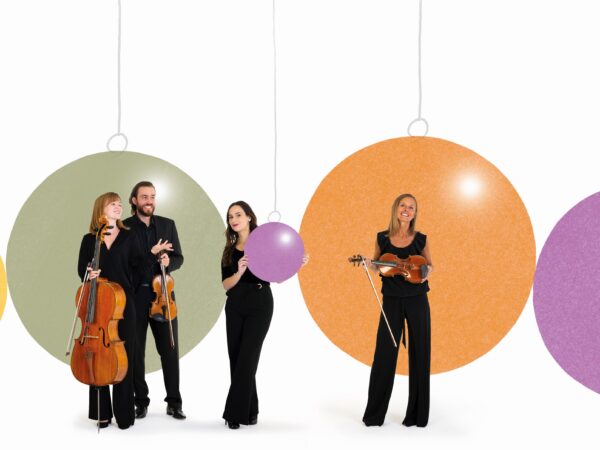
Works and composers
Rodgers & Hammerstein The Carousel Waltz
Rodgers & Hammerstein Oh What A Beautiful Morning
Rodgers & Hammerstein Surrey With The Fringe On Top
Anderson Sleigh Ride
Marks Rockin’ Around the Christmas Tree
Trad. arr. GoodwinThe 12 Days of Christmas
ProkofievTroika
Marks Rudolph the Red-Nosed Reindeer
Berlin White Christmas
Slade Merry Christmas Everybody
Wood Oh I Wish It Could Be Christmas Every
CELEBRATION OF CHRISTMAS CAROLS
Traditional Christmas sing-along
Saturday 23 December, 7.30pm
Lighthouse, Poole
Experience the warmth and joy of Christmas with a concert devoted to the best traditional carols ever written. Join in the singing with the Bournemouth Symphony Chorus and Youth Chorus. Favourites include O Come All Ye Faithful, Good King Wenceslas, O Little Town of Bethlehem, The First Nowell, God Rest You Merry Gentlemen and Hark the Herald Angels Sing. With a selection of Christmas music the evening is the perfect way to start the Christmas holiday in the company of family and friends, with a good-old sing-along.
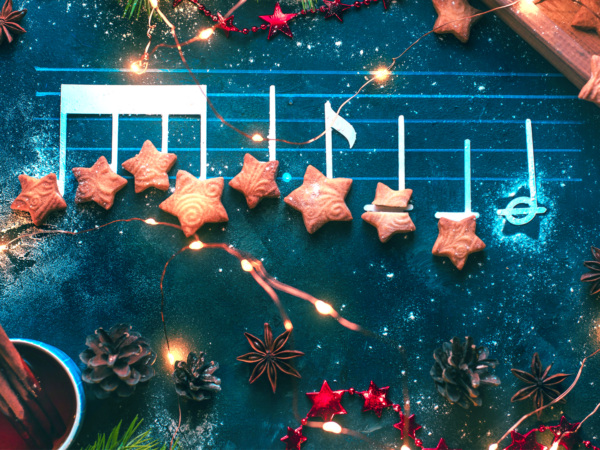
Works and composers
Trad. O Come All Ye Faithful
Adam arr. Battiwalla O Holy Night
Trad. arr. Wilberg Wexford Carol
Trad.Good King Wenceslas
Leontovych arr. Fukada Carol of the Bells
Trad.The First Nowell
Trad.God Rest Ye Merry Gentlemen
Handel arr. WilbergJoy To The World
Gruber arr. CarrSilent Night
Trad.O Little Town of Bethlehem
Rutter Sans Day Carol
Mendelssohn Hark the Herald Angels Sing
FROM VIENNA TO KVIV
Monday 1 January, 3pm Lighthouse, Poole
Thursday 4 January 2024, 7.30pm
Taunton Brewhouse, Taunton
Friday 5 January 2024, 7.30pm
Weymouth Pavilion, Weymouth
Saturday 6 January 2024, 7.30pm
Mayflower Theatre, Southampton
To herald the New Year, our stylish Viennese Gala takes a trip from Vienna to Kyiv with BSO Chief Conductor, Kirill Karabits, and folk singer, Ruslana Lotsman. To celebrate the Ukrainian Orthodox Christmas (6 January) we will include a selection of traditional Ukrainian folk carols taken from a special music project from 2018 called “Carol” with arrangements by Bogdan Kryvopust. They are unique in their harmonious combination of his treatment of ancient folklore chants sound original in a new way with the colourful folk vocals of Ruslana Lotsman, bringing them into the atmosphere of the archaic ritual holidays of Ukrainian people. The concert also features a selection of waltzes, polkas and marches by the Viennese waltz-king, Johann Strauss II.
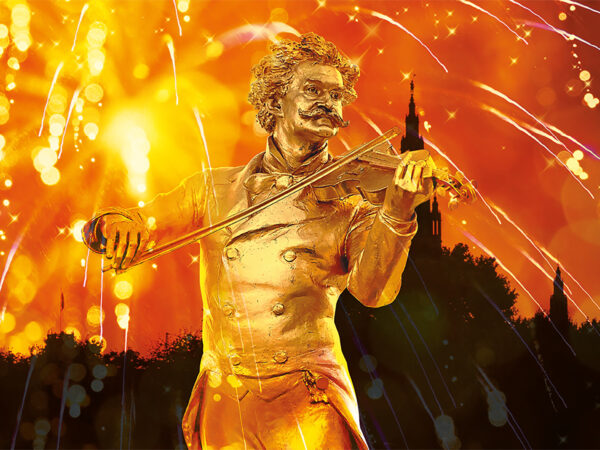
Works and composers
J Strauss IIA Thousand and One Nights Waltz
J Strauss II Persian March
J Strauss II Fairy Tales from the Orient Waltz
Ukrainian Folk CarolsA New Joy Has Arrived, The Dark Night, Let Me in the House, With White Snow, Malanka
J Strauss II The Emperor Waltz
J Strauss II Thunder and Lightning Polka
J Strauss II Voices of Spring Waltz
J Strauss II Eljen a Magyar Polka
J Strauss II On The Beautiful Blue Danube
VALENTINE CLASSICS 2024
Romantic classics for a special evening
Lighthouse, Poole, Saturday 10 February 2024
Join the BSO for a sumptuous concert of the most romantic symphonic music of all time. Classical music offers some of the most romantic melodies ever written; from songs and arias that capture the intense flush of first love, to tear-jerking love themes from some of the most romantic stories ever told from both opera and cinema, there’s an endless range of wonderful romantic music to choose from.

Works and composers
Steiner Gone With The Wind Overture
Puccini E lucevan le stelle from Tosca
Lehár Yours Is My Heart Alone
Shostakovich Romance from The Gadfly
Wagner Liebestod from Tristan & Isolde
J Williams Sayuri’s Theme from Memoirs of a Geisha
Puccini Nessun Dorma from Turandot
Puccini Intermezzo from Manon Lescaut
De Curtis Return to Sorrento
Elgar Salut d’Amour
Morricone Gabriel’s Oboe from The Mission
Puccini Donna non vidi mai from Manon Lescaut
TchaikovskySwan Lake Suit
CLASSIC fm HALL OF FAME
The greatest works in classical music
Saturday 20 April 2024, 7.30pm Lighthouse, Poole
Enjoy an evening featuring five of the greatest works in classical music!
Rossini’s evocative overture with its flowing melodies and infectious momentum, is instantly recognisable while Grieg’s Piano Concerto is loved for its lyrical and melodic tunes, drawn from Norwegian folk music. Witness the fire, passion and revenge in a doomed Spanish love story in the orchestral suite from Bizet’s Carmen and bathe in the silvery light of Debussy’s ode to the moon. Finally, Gershwin’s vivid musical postcard portrays the impressions of Parisian life – the American tourist brought to life in a bluesy trumpet solo, rollicking syncopated rhythms, and sweeping, romantic melodies.
Works and composers
Rossini The Thieving Magpie Overture
Grieg Piano Concerto
Bizet Carmen Suite
Debussy Claire de Lune
Gershwin An American in Paris
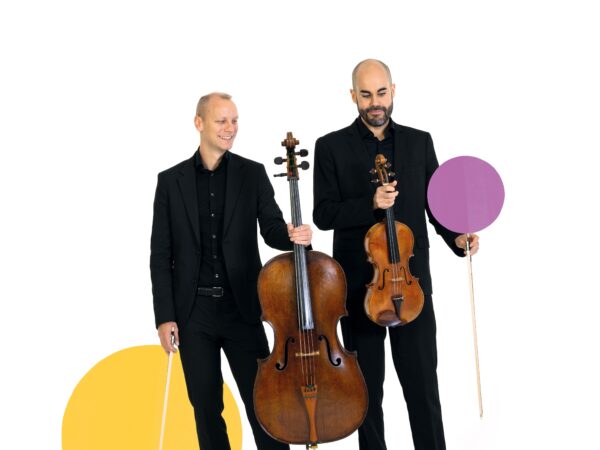
DAZZLING LISTZ
Elgar, Liszt, Brahms
Wednesday 10 January 2024, 7.30pm
Lighthouse, Poole
Cast in a single rhapsodic sweep, Liszt’s Piano Concerto No.2 could be described as a miniature three-movement work followed by an expansive fantasy. It is built almost entirely on a single theme and the effect is virtually seamless as it metamorphoses into many varied characters—yearning, solemn, martial, sensuous, serene and heroic. The Second Symphony might be described as Brahms’ “Pastoral”. Its song-like melodies are pervaded by a gentle and lyrical quality – in their simple beauty the themes give the impression of having been written down as a result of spontaneous inspiration. Similarly, Elgar said the music for his colourful tone poem came to him “in a flash” while walking by an ancient Roman road and that all that remained was to simply “write it down”. It is a magnificent musical tribute to the glory of Italy and the country’s natural beauties.

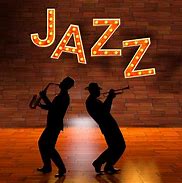
LIVE JAZZ
Jazz at Progress November 2023
Music Is: Chris Biscoe Plays Mike Westbrook
review by TREVOR BANNISTER
Chris Biscoe saxophones, Kate Williams piano, Mike Outram guitar, Dave Whitford bass, Eric Ford drums

It was a real pleasure to welcome the return of saxophone virtuoso Chris Biscoe to Jazz at Progress recently after an interval of six years. His latest project, Music Is: Chris Biscoe Plays Mike Westbrook captures with astonishing brilliance the spirit and vast range of one of jazz’s greatest composers, Mike Westbrook – creatively active as ever, aged eighty-seven, and soon to be leading his Band Of Bands, a collection of long-term alumni including Chris Biscoe, at London’s Café Posk on 2nd December.
But more than that, ‘Music Is’ serves as a platform to reveal Biscoe himself as a musician of rare expressive quality and as a tribute to his friends and fellow musicians who are no longer with us – Tony Marsh, Danilo Terenzi, Stuart Brooks, Lois Barry and Bobby Wellins.
The seeds of Biscoe’s long association with Mike Westbrook took root long before he joined the Westbrook Trio in 1979. As he told Chris Searle in a recent interview for the Morning Star, “I first heard the concert band live at the 100 Club and fell in love with the mix of freedom, organisation, tunes and great solos by saxophonists like Mike Osborne, Alan Skidmore and the real favourite, George Khan. I loved Mike’s constant desire to explore new projects and his willingness to take on the unusual.”
He continued, “ ‘Music Is’ starts with the history of my association with the Westbrooks. Hence the concentration on music from the Mama Chicago and Cortege albums. It’s a mixture of pieces I felt I could play in a similar way to their first incarnation, and others I wanted to take in a different direction.”
‘Music Is’, from ‘On Duke’s Birthday’, Westbrook’s celebration of Duke Ellington, opened the evening to beguiling effect. Whitford and Ford improvised freely around the variations of the plaintive theme expressed by Biscoe on soprano sax. Did Biscoe really conjure those final notes from his instrument? So exquisitely beautiful and yet way beyond its normal range. Or were they a figment of the imagination? Stunning.
‘Mama Chicago’, Westbrook’s ground-breaking ‘Jazz Cabaret’ from 1979, gave birth to the next two numbers. The richly evocative ‘Mama Chicago’ combined Kate Williams’ free-flowing piano, Biscoe’s slow searing alto and Outram’s bluesy guitar in a glorious melee of changing moods and shifting rhythms. ‘Goin’ to Chicago’ could be described as an atmospheric ‘road-song’, depicting the tension and mounting excitement of driving to the most populous city in America’s mid-west, on a journey charged with the anticipation of the delights Chicago has to offer. I loved Eric Ford’s propulsive drumming and an insistent figure from Kate William’s keyboard that seemed to be counting down the miles to the destination.
The contemplative ‘View from The Drawbridge’ saw a return to a trio format, this time comprising Biscoe on soprano, Outram guitar and Dave Whitford on bass. First recorded in 1975 by a nineteen-strong orchestra, this arrangement lost none of its emotional splendour in this scaled-down interpretation. It brought to mind the haunting beauty of ‘Starless and Bible Black’, Stan Tracey’s timeless collaboration with the late Bobby Wellins.
The calming influence of Kate William’s sensitive keyboard touch helped restore order to the enjoyably anarchic portrait of a late-night street scene in Vancouver depicted in ‘Aggro-Vancouver-Desperado’, allowing Biscoe’s majestic baritone to emerge briefly from the ensuing chaos. Biscoe explained the inspiration for the piece. ‘For some unknown reason Mike and Kate Westbrook and I decided to walk back from an out-of-town gig by the pianist/singer Dave Frishberg. Vancouver is light and airy in daytime. It’s a lairy place at night.’
The first set closed with a personal favourite of Mike Westbrook; the Friedrich Hollaender/Ralph Freed ballad ‘You Leave Me Breathless’, featuring a beautiful solo by Mike Outram.
The yearning ache of loss filled Chris Biscoe’s baritone in the sax/drum dialogue that opened the second set as he reflected on the desolation of old communities in the wake of modern development in ‘Wasteground and Weeds’.
The following three pieces were drawn from ‘The Cortege’, Westbrook’s massive work for a seventeen-piece orchestra originally issued as a triple-album in 1982 which drew its inspiration from the canon of European poetry.
‘Enfance’, based on the text of French poet Paul Eluard captured the joyous spirit of childhood, though tinged with the bitter sweet knowledge that all too soon it comes to an end.
‘July ‘79’, served as a reminder that ‘The Cortege’ was commissioned for the late and much-lamented Bracknell Festival of that year and evoked the jazz/rock feel of those days. Fine solos from Biscoe on alto and Mike Outram paid tribute to former Westbrook colleagues Chris Hunter and Brian Godding.
As if to say, ‘Here we go guys. Let’s see where this will take us’, everyone cut loose to joyous effect on ‘Graffitti’, the final choice from ‘The Cortege’.
A gorgeous re-working of ‘Music Is’, this time with the full band, and with Kate Williams and Mike Outram very much to the fore, brought the evening full circle to a magical close.
But there remained one more tune to play – ‘Johnny Come Lately’, another personal favourite of Mike Westbrook. Somehow the band took on the sound of a much bigger ensemble as they stretched out on this Billy Strayhorn classic. The quirky stops and starts to the arrangement kept musicians and audience alike firmly on their toes. A great ending to a wonderful evening.
In a brief conversation with Chris after the gig, he expressed delight at the size of the audience and the response to the music. ‘After all’, he remarked, ‘playing Mike Westbrook’s music isn’t like revisiting Miles, Mingus or Gerry Mulligan/Paul Desmond, but it does have tremendous appeal.’
True enough. Let’s trust that the ‘Music Is’ project will make his name better known, along with that of CHRIS BISCOE.
https://www.chrisbiscoe.co.uk/ https://www.westbrookjazz.co.uk/
As ever our thanks to Stuart McCubbin and his band of helpers who form the Front of House and technical team at the Progress Theatre.

Jazz On Air
Hot Biscuits served by STEVE BEWICK

Seasons greetings to all our listeners and readers. This week´s edition of Hot Biscuits will be last broadcast until the New Year. Remember though that is plenty in our archives till then for your jazz pleasures. We finish the year with an entertaining contemporary CD from SoSaLa from Gary Heywood-Everett, `Trash the world.`
There are further pieces to hear from Art Pepper, Blue Couch Trio led by Slawomir Dudar inviting you to travel to China., Terence Collie, and GoGo Penguin assuring us,` everything is going to be alright.` We close the show with a track from Smile, the recent CD from the Grant Russell Quartet. I have long been a fan of. Bass player Grant Russell. This new relased is his first CD. I recently interviewed him for a future broadcast. So, please have listen to our broadcast and the perhaps copy our link below and PASS IT ON to like minded jazz lovers.
You can join us 24 / 7 at www.mixcloud.com/stevebewick/
to hear our radio shows, dj mix sets and podcasts.


MANCHESTER
Shane MacGowan & Ewan McColl
report by I LOVE MANCHESTER newsletter

In the wake of Shane MacGowan’s (left, with Kirsty MacColl) recent passing, the legacy of ‘Dirty Old Town’ gains a poignant resonance, threading his musical journey with Salford’s gritty narrative of urban transformation
As the world recently bid goodbye to the musical legend Thom Bamford wrote in the I Love Manchester web site and newsletter to remind us that believe it or not, he had a connection to Salford through his music.
Greater Manchester has produced some of the greatest music ever created. No doubt about it and even the most cynical couldn’t deny it.
And Dirty Old Town, written by Ewan MacColl was made even more famous with the passionate and evocative vocals of Shane MacGowan.
Few songs resonate as deeply as “Dirty Old Town.”
In the year 1949, Salford embodied the industrial core of England’s northern regions, characterised by smoky landscapes, a far cry from the contemporary and polished metropolis it has become today.
Presently, it houses major media outlets like the BBC and ITV along its canals, alongside numerous other sophisticated media companies.
While pollution levels may have experienced a more significant decline, Ewan MacColl’s “Dirty Old Town” extended beyond the depiction of the smog prevalent in his hometown.
Originating from the gritty streets of Salford, this anthem has woven itself into the cultural fabric of the region, capturing the essence of urban life and change.
As we reflect on the recent passing of Shane MacGowan, the legendary frontman of the Pogues and a figure connected to the song’s legacy, it becomes imperative to explore the song’s roots, its journey through time, and its enduring relevance.

To understand “Dirty Old Town,” (right) one must delve into Salford’s industrial past. The song, penned by Ewan MacColl in 1949, paints a vivid picture of the town during the era of industrialisation. Highlighting the impact of factories, canals, and the working-class struggle, the lyrics reflect the harsh realities faced by the people of Salford. These words captured the changing landscape of post-war Britain and resonated with a generation seeking a voice for their experiences.
Ewan MacColl, a prominent folk singer and political activist, wrote “Dirty Old Town” during a period of folk revival in the mid-20th century. MacColl’s contribution to the folk scene, coupled with the universal themes in his song-writing, secured “Dirty Old Town” as a timeless piece.
He grew up in a working-class family in Salford, near Manchester. His upbringing and the socio-economic conditions of the time deeply influenced his world view and his later artistic work. MacColl was a committed socialist and viewed folk music as a means of expressing the struggles and aspirations of the working class.
MacColl became an integral part of the folk music revival in the 1950s and 1960s. He believed in the power of folk music to convey the stories and experiences of ordinary people. Alongside his then-wife Peggy Seeger, MacColl collected and performed traditional folk songs while also writing original material that addressed contemporary social and political issues.
The song commences with a gentle tone, even as the imposing features of Salford cast their shadow: “I discovered my love on the gasworks croft / Envisioned a dream by the old canal / I shared a kiss with my girl by the factory wall.”
It evokes a cinematic ambiance with vivid imagery: a train ignites “the night on fire,” and a dock siren wails.
The scent of spring is intertwined with the “Salford wind,” though later, MacColl altered it to “smoky” following the local council’s request (some bands preserve the original lyrics to this day).
As the third verse unfolds, there’s a perceptible shift in mood: “I’m set to forge a keen-edged axe / Gleaming steel, forged in the crucible / We’ll bring you down / Like an ancient lifeless tree.”
Here, the axe serves as a symbol for the Communist Party, and the “dirty old town” becomes emblematic of capitalism, a force the singer ardently desires to dismantle.
Fast forward to the 1980s, and “Dirty Old Town” found new life through the Pogues, a band known for their fusion of traditional Irish folk with punk rock.
Shane MacGowan´s gravelly vocals and the band’s energetic arrangement brought a fresh perspective to the song, breathing new life into its narrative.
The Pogues’ rendition catapulted the song to international acclaim and cemented its place in the pantheon of folk-rock classics.
Shane MacGowan, the charismatic frontman of the Pogues, left an indelible mark on the music world.
His poetic lyricism and distinctive voice contributed significantly to the band’s success.
As we mourn his recent passing, it is an opportunity to celebrate not only his contributions to “Dirty Old Town” but also his broader impact on the folk and punk genres.
“Dirty Old Town” remains more than just a song; it is a cultural touchstone for the people of Salford and Greater Manchester.
Its themes of urban transformation, nostalgia, and resilience resonate across generations, making it a symbol of the region’s identity.
The song has been covered by numerous artists, further solidifying its status as a musical emblem of working-class life.
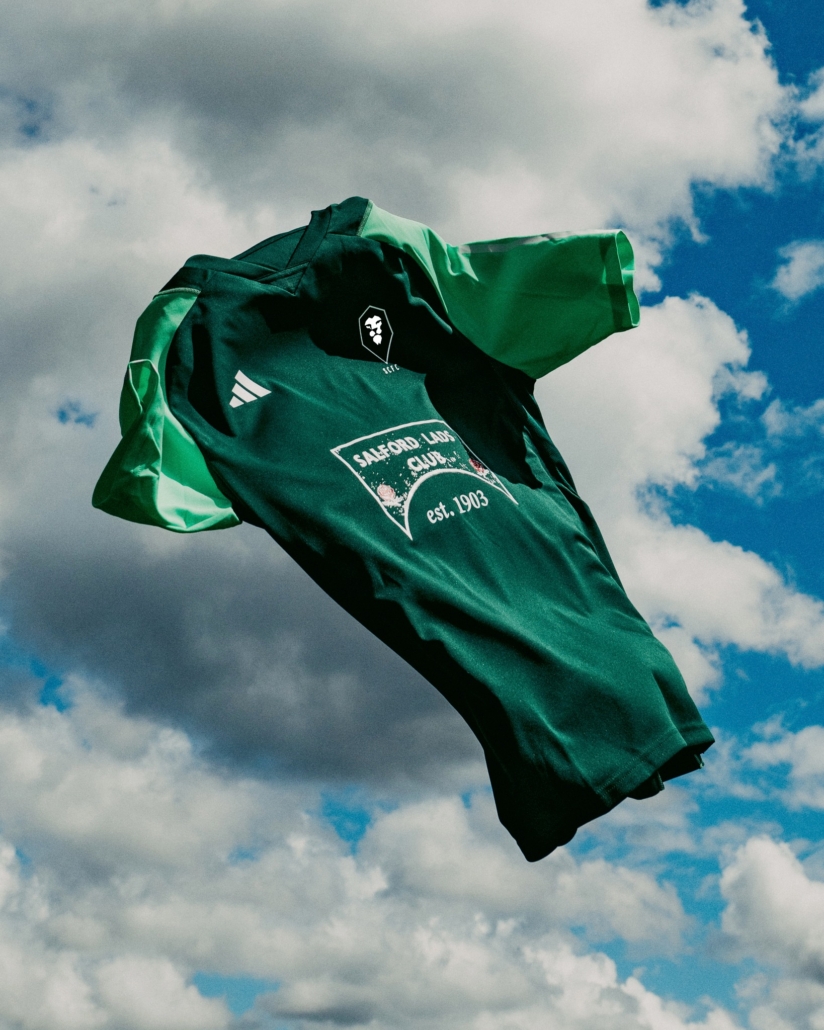
Salford City Football Club has a unique connection to the song “Dirty Old Town.” The club has adopted the iconic anthem as its unofficial theme song, creating a powerful bond between the team, the fans, and the city’s rich cultural history.
As a semi-professional football club, Salford City FC has risen through the ranks, gaining prominence in recent years. The club’s choice of “Dirty Old Town” as a rallying anthem reflects a deliberate effort to celebrate its local identity and connect with the community. The song, with its origins rooted in the industrial landscape of Salford, resonates with the working-class spirit and the city’s journey of evolution.
The lyrics of “Dirty Old Town” capture not only the challenges of industrial life but also the resilience and pride of the people who call Salford home. By adopting this anthem, Salford City FC embraces the cultural heritage of the region, creating a powerful soundtrack that accompanies the team’s journey on the football field.
For fans of Salford City FC, singing “Dirty Old Town” has become a cherished tradition, a way to express solidarity with the team and celebrate the unique character of their city. It adds a distinctive and meaningful layer to the match-day experience, creating a sense of community and pride that goes beyond the football pitch.
In tracing the history of “Dirty Old Town,” we uncover not just a song but a sonic time capsule that encapsulates the evolution of Salford and Greater Manchester. It’s quite hard to think of Salford as it is described in the song, with the flashy new towers and cutting edge developments popping up every week now. In fact, Salford was even voted one of the greenest places in the UK last year.
From Ewan MacColl’s poignant lyrics to the Pogues’ spirited rendition, the song continues to bridge the past with the present.
As we remember Shane MacGowan, let´s acknowledge the enduring legacy of “Dirty Old Town” and its profound impact on the cultural landscape of this dynamic and resilient region.

Remembered Music
Christmas Song:
Chestnuts Roasting On An Open Fire
by RALPH DENT
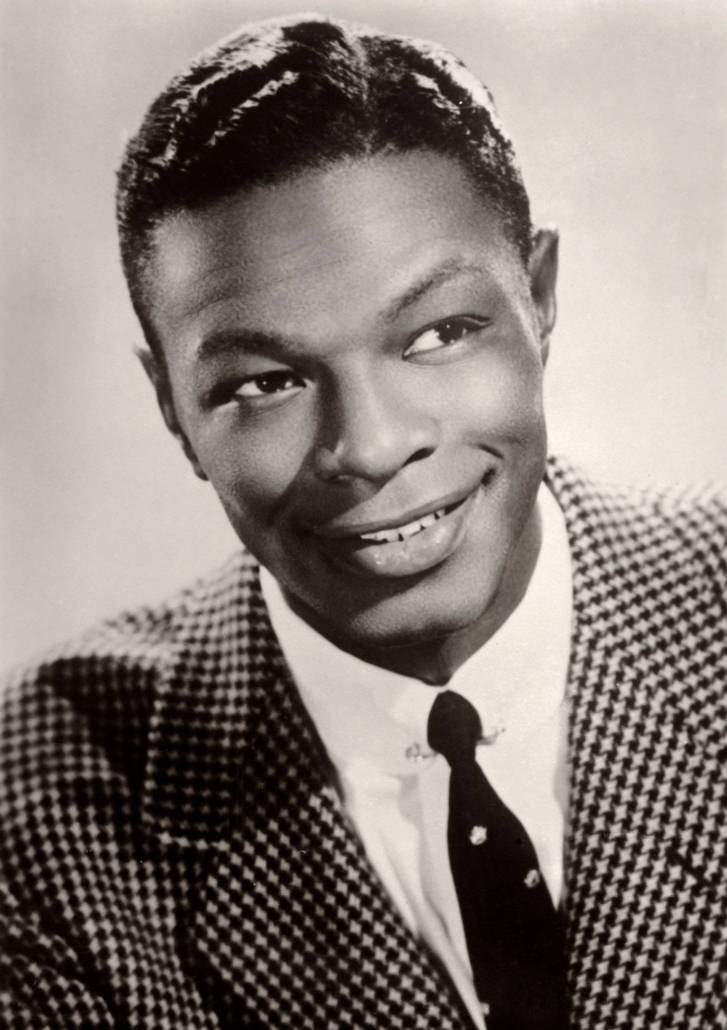
Chestnuts Roasting On An Open Fire is definitively called the Christmas Song. The lovely music and lyrics were composed by Tormé and Wells in 1946. The most popular recording of this truly great Christmas song, Chestnuts Roasting On An Open Fire was recorded by Nat King Cole. The strong imagery in the words to this Christmas song are also complimented by such sentiments as reflected in one of its lines “from kids from one to ninety-two” which encompass the essence of the family Christmas.
The notion that a traditional Christmas should be white is also profligated in the lyric of this Christmas song, Chestnuts roasting on an open fire.
Just because it’s Christmas, it doesn’t mean the music lessons have to stop. This is how Jack Frost can teach you a thing or two, all while nipping at your nose.
Classic fm tell us that The Christmas Song, is a timeless festive tune, penned in 1945 by Robert Wells and Mel Tormé. As a winter favourite, it’s been covered by Nat King Cole, Bing Crosby, Christina Aguilera, and most recently Jacob Collier, whose version was nominated for a
Classic fm are excited because an American composer and music professor, David Rakowski, has taken the tune, and cleverly reworked it into a song not about chestnuts and winter, but one about music theory.
Before you read, I would urge you to listen to the Nat King Cole version as a compare and contrast exercise.
Rakowski, a former student of Luciano Berio, wrote these alternative lyrics to The Christmas Song. The words capture those fundamentals of music theory which appear throughout the beloved melody. Further lyrics were added by former music theory teacher, Dave Swenson.
It’s all very witty, and you can hear it on the Classic fm web site.
The new words highlight the musical patterns in the tune, and different types of intervals, scales and cadences. Think of it as a music theory recipe for a great song.
It even quotes a line from the theme song of the 1960s animated television series, The Flintstones.


Reader´s Perspective
All Points Forward: A Looking Ahead and Behind
with PETER PEARSON
Approaching Christmas and New year seems a good time to be looking ahead, especially when just around the corner I´ll be in the audience for a concert by Tim O’Brien. Nowadays, he mostly tours and records with his wife Jan Fabricius who is a musician in her own right. She is also integral to his band tours in the States. I notice that Efex and Sound Roots were advertising the gig in last week´s PASS IT ON so I´m looking forward their being a good sized audience.
Having recently made our editor aware of the music of Thomm Jutz and Eric Brace and have been assured by him that, he too, loves their music I can also tell him that the duo have a new album, Simple Motion, to be released in February and it´s good to be able to look forward to that so early in the New Year, looking forward to that one.
When Norm asked me who are the three artists I would most like to have had a chat with I think he had in mind some of the great Americana artists that we both love.
Unlike Norm, I have never actually interviewed any of these artists, but over the years I have found that because they play to relatively small audiences in mostly intimate venues and in front of fans who for the most part are familiar with their music, they take time out to have a chat during the intermission or at the end of their concerts. So, for example, although I have not actually interviewed Eric Taylor, I have sat down with him over a pre-gig beer with a couple of other gig attendees who turned up early and had an extended discussion with him mostly, but not exclusively, about music.
Because these artists have gone out of their way to chat with fans there are few from this genre that I wish I could have had a conversation with. So Norm I am going to cheat a bit here, at least with my first selection.

I spent a most enjoyable last Sunday evening tuned to BBC Four TV. Billed as a Leonard Bernstein evening, its focus was largely on his relationship with the music of Gustav Mahler. BBC 4 programmed the evening to coincide with the forthcoming Netflix release of Maestro, a film about Bernstein’s professional and personal life and heavily laden with clips of the actor playing Bernstein conducting Mahler’s works.
Unlike his contemporary Sibelius, there are no moving photos of Mahler. He died in 1911 at the young age of 51. Amazingly his younger wife Alma can be seen as late as 1967 having her hand kissed by Bernstein, following a performance of a Mahler Symphony.
Mahler (left) was a unique composer in that during his lifetime his day job was as a conductor of a number of world leading Orchestra’s and he was regarded as one of the greatest conductors of his age. Not until the 1960’s did his compositions become a staple of the modern classical repertoire. His work was banned by the Nazi regime because he was a Jew.
If I could have had a chat with him I would have asked him why he thought his work as a composer was not more highly regarded and widely performed during his lifetime. My time will come is one of the most quoted statements made by the composer.

Harry Chapin, (right) the folk singer and humanitarian, died in 1981 at the age of 39 following a motor vehicle accident. I was only able to catch him in concert once in 1977 at the relatively large Manchester Ardwick Apollo and although he climbed off the stage at the end of a 3 hour show and shook the hands of everybody in the first three rows of the stalls, it was not the sort of venue for a prolonged chat with his fans.
Somewhat like Mahler, his works are large scale and autobiographical in nature. In the reverse of Mahler, Chapin´s work was popular during the 1970’s singer songwriter period of his lifetime but is rarely, if ever, nowadays played on radio or covered by other artists, with the exception of his brother, Tom.
Nevertheless he has left not only a catalogue of works that can be dipped into via Spotify and other media but also, perhaps more importantly, has left a huge imprint in his native America for his work on campaigning for a number of humanitarian causes, in particular the elimination of World Hunger. Half of his 200 annual performances were benefit concerts. He started the food bank called Long Island Cares and co-founded World Hunger Year.
I would have loved to chat with him about music and life. I would have asked if he would have seen himself going into politics or if he thought he could achieve more by lobbying politicians. I would have asked if he thought he would continue for much longer as a performer given his increasing commitments to his humanitarian causes.

Chip Taylor is perhaps the most approachable and endearing artist I have ever met. He is the brother of actor Jon Voight and world famous geologist Barry Voight and uncle to Angelina Jolie. His given name is James Wesley Voight and at 83 is approaching the twilight of his long and distinguished (though interrupted) career as a singer songwriter.
I started collecting his albums in the early 70’s. My first purchase was the album Gorgoni Martin and Taylor made with fellow songwriters Al Gorgini and Trade Martin. I then followed him via Last Chance, This Side of the Big River and Somebody Shoot Out The Jukebox. But then between 1980 and 1995 he disappeared from the music scene. He had become addicted to gambling and was so successful that he was banned from a number of casinos because of his track record of winning.
He returned to music in 1995 inspired by singing and composing songs for his dying mother.
I went to one of the first of his UK comeback concerts in 1995 at the intimate Hop and Grape Student Union venue in Manchester armed with my collection of vinyl covers of his albums for him to sign. Sign them he did and engaged me in an extended conversation to the extent that when I followed him to the Aldelphi in Preston a few days later I was greeted with a name check from the stage, to my eternal embarrassment. It should be understood that he was then in the process of building a UK fan base and that his audience was a small albeit dedicated coterie: nevertheless once Chip knows your name he never forgets.
Thereafter he continued to tour the UK at least once or twice a year for at least the next 14 years. By this time I had joined his Train Wreck fans blog, shared some email correspondence and always had a chat with him when attending his UK gigs. There was a famous occasion when he had been booked to appear at the Southern Hotel in Chorlton, Manchester, a pub only a few miles from where I live. He was touring with Carrie Rodriguez on violin and John Platania on guitar. Some folk music aficionados might be familiar with the UK two in a bar rule. Under this rule (now rescinded) pubs did not need a public entertainments licence for live performances by up to two musicians. Unfortunately the promoter had booked the trio in a bar which did not have the required licence.
There followed the spectacle of one of his accompanists having to sit out every other song by stepping off the small platform stage and joining the front row. To make matters worse Chip had his leg in plaster, as a result, he jovially informed me, of a gym accident whilst ogling one of the female gym members.
Our conversations were largely superficial and mostly about the venues, his latest album and how the tour was going. Since covid he has not toured over here and has had a number of health issues but continues to issue at least an album a year on his Train Wreck label and performs on a regular basis in the States. A new album is due in February in spite of recent surgery.
I never did ask him if he regretted his career hiatus and if he thought that the experience had created the stimulus for his music to move in a new direction and if he ever thought he would still be recording and touring at 83.
His songs since 1995 have become ever more deeply personal and autobiographical. Perhaps this is most revealingly demonstrated on his album Seven Days In May. Anyone sampling this album should be aware that he has been happily married to Joan since 1964, subject to a brief separation.
Anybody wanting to sample his music via Spotify or Youtube should try Charcoal Sky from his brilliant 2 CD Yonkers NY.


Island Insights
HOW TO PRESENT A PRESENTATION
The Island Of Volcanoes by Roger Trend
first impressions NORMAN WARWICK
This article was intended to be a one-off article reviewing this new book and capturing a few words from the author. In the same way as film-makers use a book as a base for a blockbuster movie, I have decided to turn this single episode into a mini series.

The book is wonderful, with high production values and obviously written and photographed by two men sympatico with each other and their subject matter. The Island of Volcanoes is not a title of the Jurassic Park model, designed to lure you into an idyllic sounding location only to find yourself then confronted by old T Rex himself. This is not a book about fleeing for your life from a lava flow or the sudden realisation that the house you have just bought is at the foot of a still living and breathing volcano.
The author has a love of and a good deal of understanding of the science of volcanoes and how we study them and assess them. He finds sources that support his thoughts and is not afraid to ask the expert opinions of others, so this is a scientific and factual book written in everyday language with explanations of scientific terms where necessary.
I have only had my book for a couple of days and have not yet had time to read it in any depth. Instead, I have flicked through quickly, being reassured by its tone and awe-struck by many of the incredible photographs.
But all that is for episodes two and three which will follow shortly.
When living in the UK, before settling over here in 2015, I was involved in a couple of launches for my own works and in many more as host at the launches of the works of other aspirant writers. Whatever the quality of the work, and it was invariably well presented and well written, these launches were invariably held in the drafty rooms of civic libraries like those in Heywood, Middleton or Rochdale which had also served as the office space of the scribblers that we were. There was no technology, nor was there a surfeit of books to give away, and there was a dearth of attendees and an even wider dearth of attendees willing to purchase a copy.
This opening episode, however, is called How To Deliver A Presentation, and is inspired by the event held at Casa de la Cultura Benito Perez Armas in Yaiza on Saturday 9th December at mid-day. (Lesson one, I used to say to my writing students in the UK, is don´t launch your book at mid-day on a Saturday: everyone is either shopping at Bury Market or is heading off to watch a football match.
However, the publishers and their advisors and their authors eschewed such sound advice and together delivered the perfect presentation.
By the time we had taken seats on the front row (Dee and I and our two undercover reporters) there was a hundred or so people who had also turned up early for this talk. As the starting time approached we smiled at how relaxed were the two publishers (and photographer) and their author. So too, as ever, was their mediator Larry Yaskiel, a much loved ambassadorial figure and honorary editor of Lancelot magazine.
Roger has in fact contributed many articles to Lancelot over the years, and that camaraderie between these four men permeated this entire presentation. They even managed to make all the final tweaks to what looked to be pretty state of the art technology, which between them concluded just as we reached high noon, and they did so without one wrong word.
The smart screen was not over-used (there was no death by Power Point) but was employed simply to amplify and clarify what was being said by anyone at that top table.
The book´s strap-line tells us that it is intended as a ´A Guide To Lanzarote Geology And Landscape´ and Roger talked about that in his opening few words and for those of us who thought we might be sitting through a university lecture on the science of it all, he assured us that it would be much more like a primary class lesson delivered by a much loved teacher.
The large crowd that was in attendance was comprised of a huge majority of indigenous folk, with a pride in their landscape and a curiosity about how it was shaped. They all had folkloric accounts that have proliferated since the eruptions in 1730.
The publishers of the work, Mario Ferrera and Professor Juan Carlos Carracedo at Ediciones Remotas delivered in tandem with Roger, who spoke his sections in English and they were translated and sometimes adorned his thoughts.
Professor Valentin R.Troll An Earth Science Fellow of The Royal Academy Of Sciences Of The Canary Islands, along with Mario and Carlos could not take part today as he was working on a project on the other side of the world. They are scholars and leaders in their field with geology and his love of photography adding an extra dimension. Each speaker had their own microphone on the table, and shared vocal duties. This technique held the attention of the audience with the changes of tone and language breaking up the talk and made it sound less like a lecture.
The microphones behaved impeccably with none of the whistles of whooshes or pops that used to violate similar presentations I remember in England.
There was a little cameo that saw us discuss the conversation around deciding whether to take a scientific or aesthetic approach to the project when Roger first decided to write his book. It was agreed upon a slight emphasis on the scientific but at first glimpse, and based on what I have heard others say, they got that balance right.
There was a very amicable and civilised question and answer session with the audience on conclusion of the speeches, and this raised some interesting questions and fulsome answers.

This section was followed by a closing book-signing, and it seemed that just about everybody had bought a copy of The Island Of Volcanoes, as well as other titles from the publisher´s well-stocked table.
Somebody organised and paid for a drink and nibbles area in the beautiful courtyard, with the palm trees forming an avenue across the square to the beautiful church. A crowd gathered round the serving area for the cheese and savoury platters and glasses of wine, and others took a stroll around the Belen only twenty yards away.
We heard plenty of chatter about the book, about Lanzarote and its shaped-by-volcano landscape and that is always the sign of an event like this having been successful.
Roger and his colleagues had held their audience and prompted animated chat.
We drove up to some of the peaks that encircle the Yaiza region that had been included in this talk. I have to say my aesthetic appreciation, that I didn´t think could be increased, was in fact enhanced by the still scant scientific knowledge I had acquired today and will be rendered even further by what I am sure to gather from my reading of this excellent book.
This piece is being written 24 hours after the event and I heard this morning from my mate who says he has started reading the book already and tells me it is everything he wanted it to be. He actually epitomises the preferred reader I think Roger had in mind when writing the book. Someone with a love of the island, a curiosity about its changed landscape following volcanic eruptions and an awareness of the science and geology of it all. He admitted he has already scuttled to dictionaries to deal with some of the jargon of words and phrases of a scientific nature, but admits that looking up those words and their meaning has helped him already in reading the book and growing his knowledge of the subject matter.
If you would like to learn more about this project then look out on these pages for
Episode two. Meet The Author, Roger Trend
Episode three. Who, what, when, where, why of volcanoes.
We will also include details of precisely how you can acquire a copy.



Leave a Reply
Want to join the discussion?Feel free to contribute!